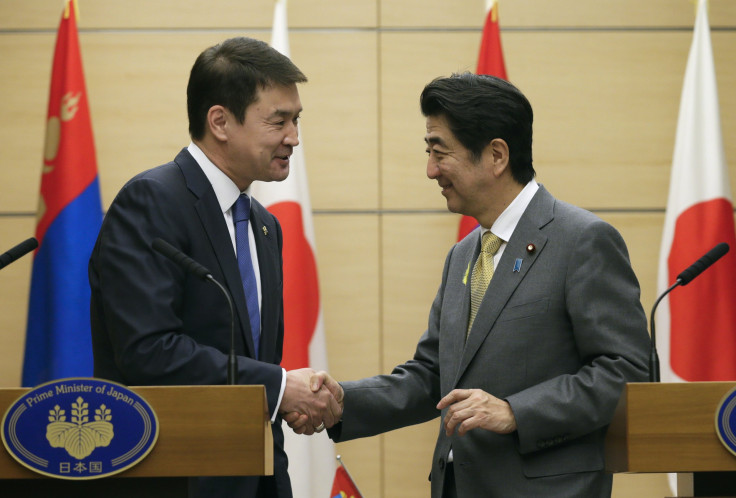Japan Gets Access To Mongolia Rare Earths In FTA

Japan now has formal access to Mongolia’s rare earths metals under a free trade agreement signed by the two countries on Tuesday.
Under the "economic partnership agreement" signed in Tokyo by Prime Ministers Shinzo Abe and Chimed Saikhanbileg, Japan will receive a steady and stable supply of coal and rare earths from Mongolia. This will greatly enable Japan to manufacture and export more automobiles to the world market. In exchange, Japan vowed to help Mongolia boost its tourism by building a new airport in Ulan Bator, the country’s capital.
The two countries’ newly signed FTA took three years to materialise, starting 2012. It was in July 2014 when they reached a basic accord. A report by the AP said Mongolia’s imports from Japan are mostly automobiles, about 16 times greater than what it exports to Japan.
Rare earths, described as such because of the difficulty in extracting and processing them from the ore, are a group of 17 elements crucial to the large-scale manufacturing of a wide range of items. They are used to manufacture many modern technologies, including consumer electronics, computers and networks, communications, clean energy, advanced transportation, health care, environmental mitigation, national defence and many others.
A report by the Oxford Business Group, citing a 2009 survey of U.S. government geologists, said Mongolia holds about 31 million tonnes of rare earths, translating to 16.8 percent of known reserves worldwide. The amount makes Mongolia “the second-biggest source” globally after China.
Four hot spots in Mongolia have been so far identified as holding the rare earths minerals. These are at Khalzan Buregtei in the country’s westernmost section; Lugiin Gol, the easternmost deposit in the Gobi Desert near the border with China; and, two in the south-central region of Mongolia.
Data from the Mineral Resources Authority of Mongolia showed that as of late 2011, there were 20 licences awarded to mining companies to develop rare-earth deposits. Of this, 15 were exploration licences and five were mining licences.
The 17 rare earths include:
Lanthanum (La)
Cerium (Ce)
Praseodymium (Pr)
Neodymium (Nd)
Samarium (Sm)
Europium (Eu)
Gadolinium (Gd)
Terbium (Tb)
Dysprosium (Dy)
Holmium (Ho)
Erbium (Er)
Thulium (Tm)
Ytterbium (Yb)
Lutetium (Lu)
Yttrium (Y)
To report problems or to leave feedback about this article, e-mail: e.misa@ibtimes.com.au.





















